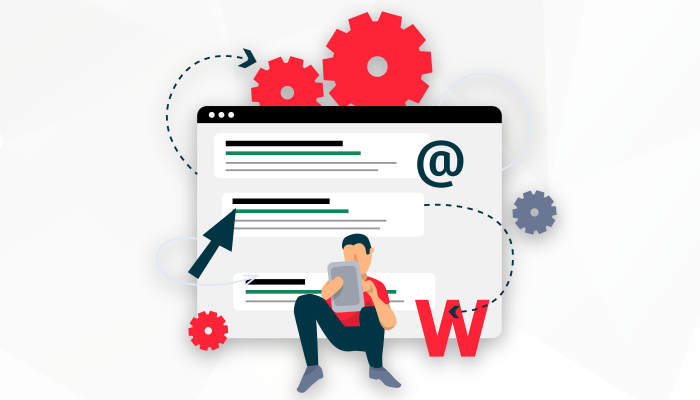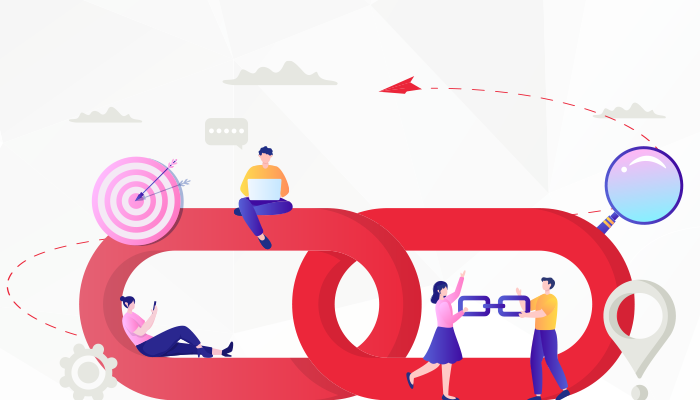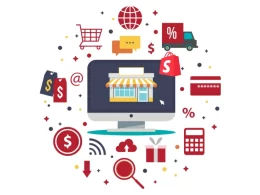We know you have been working hard to push your eCommerce website to the top of your competitors on the search engine results pages (SERPs). You have left no stone unturned to drive more website traffic and boost your conversions. It’s no longer a secret that the eCommerce space has grown more competitive now more than ever, compelling online merchants to make more impactful marketing strategies.
In such a grave scenario, it becomes mandatory to implement the right SEO approaches, as search engines do not easily forgive any wrong practices or mistakes. Even if you rectify your mistakes while doing SEO for an eCommerce website, it takes time to improve the search engine rankings, thus leading to significant business loss.
To come to your rescue, here are the top ten eCommerce SEO mistakes you should completely abandon before Google (or other search engines) abandons your site!

Not giving importance to the target market
One of the biggest mistakes that newbie SEO marketers tend to make is not considering the target market’s needs and interests well. Your keyword research should be centered around what your potential customers are looking for and their buying patterns. It’s a good practice to study your market trends, competitors’ SEO eCommerce approaches, and buyer profiles before making your final keywords list.
You may invest time and money in finding the most relevant keywords for your eCommerce website, but it may not always deliver the desired outcomes. It’s also necessary to learn what your customers are actually searching for. Start by brainstorming and noting down a few unique questions that your audience is typing in on the search engines. Perform a thorough eCommerce SEO audit and decide your short keywords and long-tail key phrases by doing a little research using keyword research tools like Ahrefs Keywords, AnswerThePublic, or even from the search bar of Google (or other search engines).
Spamming and duplicating website content
Using duplicate content or spamming your web page content with repetitive and non-relevant keywords is like killing your website forever! In recent years, Google’s algorithms have undergone sea changes, after which keyword-stuffing and using duplicate content are considered grave crimes in the SEO world.
You can see temporary benefits though, such as boosting your website rankings overnight. But when crawlers analyze your site’s content and eCommerce SEO strategy, they will ban your portal, causing more harm in the long run. So, avoid stuffing your website content, blog pages, meta titles, met definitions, and alt texts, with unnecessary keywords.

Not optimizing product pages well
Use proper product descriptions and image alt tags to optimize your product pages. It not only helps visitors make informed buying decisions but also tells Google spiders how you are presenting your web page’s content. Keep the following in mind while doing SEO for eCommerce site, especially product pages.
- Use your brand anime in product titles, alt texts, HI headings, and Open Graph data.
- Optimize image alt tags for screen readers and other accessibility tools.
- Use proper CTA buttons and other help tools, while also using a visually pleasant site theme, to improve the user interface, helping visitors navigate your pages efficiently.

Not putting efforts into internal linking
Web pages having good amounts of internal linking to other high-quality pages or content are favored in the eyes of Google (or other search engines). For example, you can link a few anchor texts using relevant keywords to refer to other content. It is one of the best eCommerce SEO practices as it not only boosts rankings but also helps readers gain detailed information about a particular topic.
Having a slow website
Today;’s customers are important – they hardly spare time for advertisers from their busy schedules. So, it’s obvious that if your page fails to open within 5–6 seconds, your potential buyers will land on your competition’s page. So, optimize your images, videos, and other elements and resize them to improve your [page load speeds.
Focusing too much on getting high ranks quickly
You need to remember that getting higher rankings is not an overnight thing. Focusing on short-term goals may lead you to adopt unethical methods like keyword spamming and other blackhead SEO techniques.
We recommend you follow eCommerce SEO best practices by complying with the algorithms of Google or other search engines. You may improve your sales and conversions in the short term, but it will hurt your website’s health over time, thus affecting your brand.
Using similar product descriptions as used by competitors
As mentioned earlier, avoid duplicating your content in all respects, even for your product pages. Avoid copy-pasting your product descriptions or product titles, even if it’s the same product. Duplicate content is a punishable crime in the eyes of search engines. Besides, if you write unique and engaging product descriptions, your buyers will find your website more valuable and authentic.
Not optimizing URLs
By not using relevant keywords in your URLs, you can miss out on a lot of potential searches. Besides, when you add keywords to your page URLs, search engine bots can understand what your web page is all about. Moreover, these keyword-optimized URLs help potential customers to [prefer visiting your site over hundreds of others.
So, instead of mentioning the product and model number in your product page URLs, which look something like:
yourwebsite.com/product/123456
try mentioning your product categories or other relevant keywords, and write URLs similar to this:
yourwebsite.com/product/womens-running-shoes
This looks much more professional, too!
Lacking product reviews and testimonials
Let’s admit it! Modern-day customers rely on customer reviews and ratings before hitting that “Proceed to Checkout” button! So, add valid client testimonials and buyer reviews to motivate positive buying decisions among your potential shoppers. You can ask some of them to leave a rating on your social media channels or create a dedicated Customer Reviews page. Alternatively, you can offer special discounts or gifts for buyers who leave valuable ratings and comments.
Not optimizing Images
Optimizing images correctly will helps in improving ranking Google Image searches and other search engines, including product page images and category pages. Alternative Tags or Alt Tags are HTML attributes of website images that help in describing the content. With respect to on-page SEO issues, alt tags should be addressed. There can be instances wherein the image aspect on the website will not render effectively due to wrong file path, incorrect filename, or the use of wrong extension. Some of the common mistakes are missing alt tags or broken images.
Final Words
In other words, try to avoid SEO errors in all aspects and follow authorized and legal practices only. Because even if your mistakes were not intentional, search engine crawlers wouldn’t know that, thus hampering your organic rankings and organic website reaches. We hope the above eCommerce SEO tips on the mistakes to avoid will help you make better strategies, thus boosting your website traffic and conversions.
FAQ
Q. 1. What is an eCommerce SEO Checklist?
eCommerce SEO checklist is a set of guidelines and practices that you need to keep in mind while planning and implementing organic SEO strategies for your website. An ideal SEO checklist that boosts rankings and website traffic includes diverse categories like on-page and off-page approaches, along with keyword research, competitor analysis, market research, and more.
Let’s sum up a few of them in brief.
On-page SEO and Content
- Index your website to invite crawlers.
- Optimize your URLs with relevant keywords.
- Perform an eCommerce SEO audit.
- Optimize meta titles and meta descriptions with target keywords.
Off-page SEO
- Analyze your competitors’ content marketing strategies and other campaigns.
- Leverage digital PR.
- Create valuable backlinks
- Create more guest content.
- Focus on social media marketing.
- Make local listings for your brand on Google Maps (former Google My Business), etc.
Keyword Research
- Identify your niche.
- Jot down relevant topic ideas.
- Find long-tail keywords.
- Determine the search intent for every keyword.
Competitor Analysis
- Identify your competitors.
- Find the keywords your competitors are ranking for.
- Track their marketing tactics and outcomes.
- Check their product descriptions and pricing.











